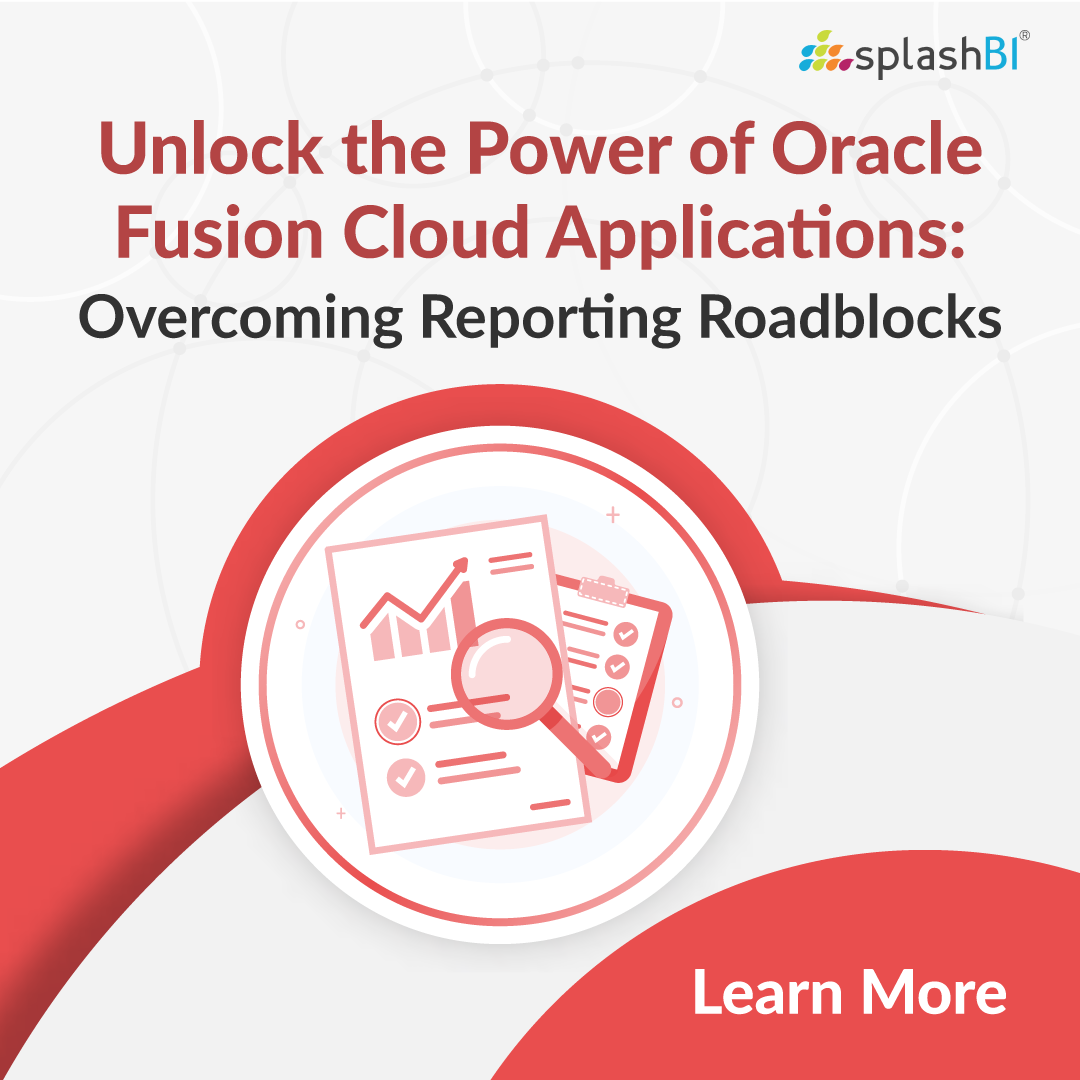The Master Guide to Oracle Fusion Reporting Tools
In reporting, accurate and timely representation is the baseline for good decision-making in enterprise. User of Oracle Fusion ERP can be able to access fit-for-purpose analytics aimed at enabling your organization, irrespective of the line the business is in finance, supply chain and human resources, while also improving end-user experience. Using these tools, Oracle Fusion allows companies to meet their reporting requirements at all levels, including operational reports and financial statements. But for those who want to add flex and function one more step forward, adding in complementary solutions can offer even further reporting capabilities.
Oracle Fusion ERP is loaded with many powerful native reporting tools. But for companies looking to add more flexible layers of depth or more sophistication, there are ways to make your reports better. This blog post is dedicated to the various reporting tools that come with Oracle Fusion and how organizations can tap into additional value by having these tools complement each other.
Deeper Look: Oracle Fusion ERP Reporting Tools
There are a number of reporting tools, all with unique strengths and a different primary purpose within the ERP but each designed to be utilised for a particular set of informational requirements by Oracle Fusion ERP. Tools that provide users access to the data stored within Oracle Fusion and analysis of that data to support strategic decision-making.
1. OTBI (Oracle Transnational Business Intelligence)
OTBI is a self-service ad hoc, real time reporting solution. Integrated with Oracle Fusion ERP, OTBI allows users to create personalized reports on several modules-supply chain, finance & HR-with minimal technical prerequisites.
Key Features:
- Self-Service Reporting: The OTBI product is designed for business user self-service reporting, as users can create their own reports/dashboards and are not dependent on IT.
- Real Time Access: OTBI relies on is Reports in a prompt/request mode of operation, the results are pulled from online transactional data; hence you get real-time access to innovations.
- Pre-built reports: There are numerous pre-built reports and templates provided by OTBI. These Oracle Fusion Cloud Pre-Built Reports streamline your reporting process and enhance your decision-making capabilities.
2. Oracle Business Intelligence Publisher (BIP)
Another native tool in Oracle Fusion ERP is the Oracle BI Publisher (BIP). BIP is especially well-suited to businesses that must create sophisticated, high volume reports with detailed formatting, like invoices, purchase orders and customer statements. It is made with creating enterprise-grade documents, pdfs, excel sheets and word files.
Key Features:
- Batch processing: As BIP is designed for mass report generation, this makes it more suited to operational reporting.
- Support for multiple reporting formats: We can generate reports in different output formats, leading to the flexibility of how you want data to be answered and analysed.
3. Smart View for Excel
For those who prefer working in Microsoft Excel, Oracle’s Smart View add-in provides a seamless way to retrieve and analyze Oracle Fusion data within the familiar Excel environment. This is especially beneficial for finance teams who require a high level of control and flexibility in their data analysis.
Key Features:
- Excel integration: Users can access and manipulate Oracle Fusion data directly in Excel, simplifying financial reporting in Excel.
- Ad-hoc reporting: Smart View supports ad-hoc queries, enabling dynamic report creation and data exploration.
4. Financial Reporting Center (FRC)
The Financial Reporting Center (FRC) is a valuable tool within Oracle Fusion for users who need to create financial statements, including income statements, balance sheets, and other statutory reports. FRC integrates tightly with Oracle’s General Ledger, making it a go-to tool for financial reporting.
Key Features:
- Pre-built financial templates: FRC provides a range of templates that streamline the process of generating financial reports.
- Direct integration with financial data: Reports are built on real-time data pulled directly from the General Ledger.
Oracle Fusion Tools to Optimize Reporting Efficiency
Oracle Fusion reporting tools are used by users in various departments; from finance to procurement and therefore offered the ability to cater for all needs. These built-in tools — OTBI, BIP, Smart View and FRC — enable real time data analysis, creating scale reports and financial reports.
But for organizations that need to be more agile, or want certain customizations, there are ancillary tools you can use with Oracle Fusion. And then there are the modern advanced reporting solutions: with more insights, better UX and also covering parts that Oracle BI Publisher does not: connecting non-Oracle systems or additional data sources.
How to Improve Outlook Fusions Reporting?
Although Oracle Fusion ERP provides good building blocks for a reporting solution, businesses with more sophisticated reporting requirements might want to include additional solutions that enhance their ability to report on extended data side-by-side. The result is that these solutions allow users to stitch together data back and forth from different platforms, drive much more personalized sorts of reports, and yield greater insights.
Some of the features businesses may be most interested in seeing improved upon include:
- Cross-functional data integration: Merging Oracle Fusion data with outputs from other systems such as SQL Server, Snowflake, or third-party applications to produce a broader view of the reporting.
- Data visualization: Data visualization: Allowing end users to consume complex data in a more comfortable and consumable way is crucial for effective reporting. Using the right data visualization dashboard and charts can simplify complex data into intuitive visual tools, enhancing the overall impact on your organization.
But the final piece of this puzzle is in providing self-service reporting which enables users across the organization to generate their own reports without requiring long-winded technical degrees.
Organizations can therefore exercise greater ownership of their data, enjoying faster, more effective decisions at all levels, by extending the native capabilities of Oracle Fusion reporting tools.
The Wrap: Oracle Fusion Reporting with SplashBI
Starting with Oracle Fusion ERP, SplashBI is the ideal answer for organizations that strive to increase the value of their reporting processes. SplashBI can sync with Oracle Fusion HCM Cloud to deliver up-to-the-minute cross-platform reports and analytics through our advanced reporting solution.
Organizations can utilize SplashBI to extend beyond the native capabilities of Oracle Fusion, building custom dashboards, blending insights from disparate sources, and enabling business users with self-service reporting. Whether you need deeper financial reporting, improved operational visibility, or simply an integrated toolkit to work smarter and faster, SplashBI complements Oracle Fusion’s powerful platform with intuitive tools that deliver better business results.














